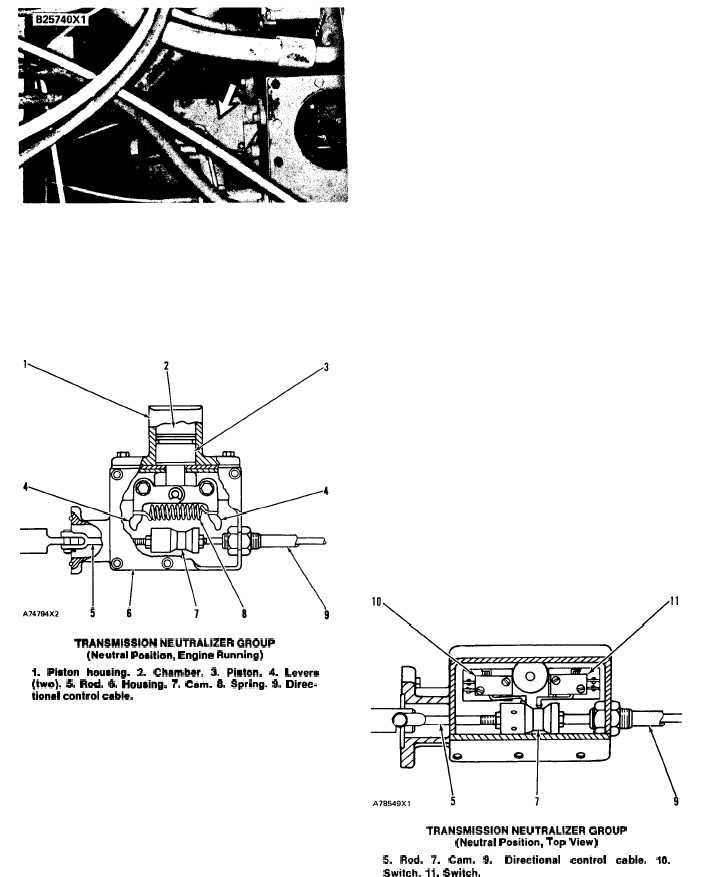TM 5-3805-258-24-1
P O W E R T R A IN
S Y S T E M S O P E R A T I O N
TRANSMISSION NEUTRALIZER GROUP
L O C A T I O N O F T R A N S M I S S I O N N E U T R A L I Z E R G R O UP
The transmission neutralizer group is fastened to
the front of the transmission case. Rod (5) is connect-
ed to the direction selection spool, of the selector and
pressure control valve group. Cam (7) is connected to
the direction control linkage from the transmission
selector lever.
TRANSMISSION NEUTRALIZER GROUP
(Neutral Position, Engine Running)
1. Piston housing. 2. Chamber. 3. Piston. 4. Lavers
(two). 5. Rod. 6. Housing. 7. Cam. 8. Spring. 9. Direc-
tional control cable.
The transmission neutralizer group moves the dir-
ection selection spool to the NEUTRAL position
when the parking brake is engaged, or when the air
pressure in the brake system goes below 140 to 205
kPa (20 to 30 psi).
OPERATION
Parking Brake Not Engaged
When the parking brake is not engaged, air pres-
sure from the air reservoir goes into piston housing
(1). The air enters chamber (2) through an air inlet
port at the top of the housing. The air pressure moves
piston (3) down. The movement of piston (3) causes
levers (4) to move apart, against the force of spring
(8).
When the transmission selector lever is moved to
either FORWARD or REVERSE, cam (7) moves
without any resistance. If the selector lever is re-
leased, it will stay in that position.
Parking Brake Engaged
When the parking brake is engaged, the emer-
gency and parking brake control valve is activated.
This valve is located at the base of the steering col-
umn. It is connected by a cable, to the parking brake
control knob under the steering wheel. When the
control knob is pulled up (engaged position), the
emergency and parking brake control valve is
activated.
This valve stops (blocks) the air pressure to the
neutralizer valve group, parking brake pressure
switch and the parking brake.
When the air pressure to the neutralizer valve
group is stopped, pressure in chamber (2) decreases.
When the pressure in the chamber goes below 140 to
205 kPa (20 to 30 psi), the force of spring (8) causes
levers (4) to come together. The movement of the
lever causes piston (3) to move up, toward the top of
chamber (2).
TRANSMISSION NEUTRALIZER GROUP
(Neutral Position, Top View)
5.
Rod.
7.
Cam.
9.
Directional
control
cable.
10.
3-49
Switch. 11. Switch.

